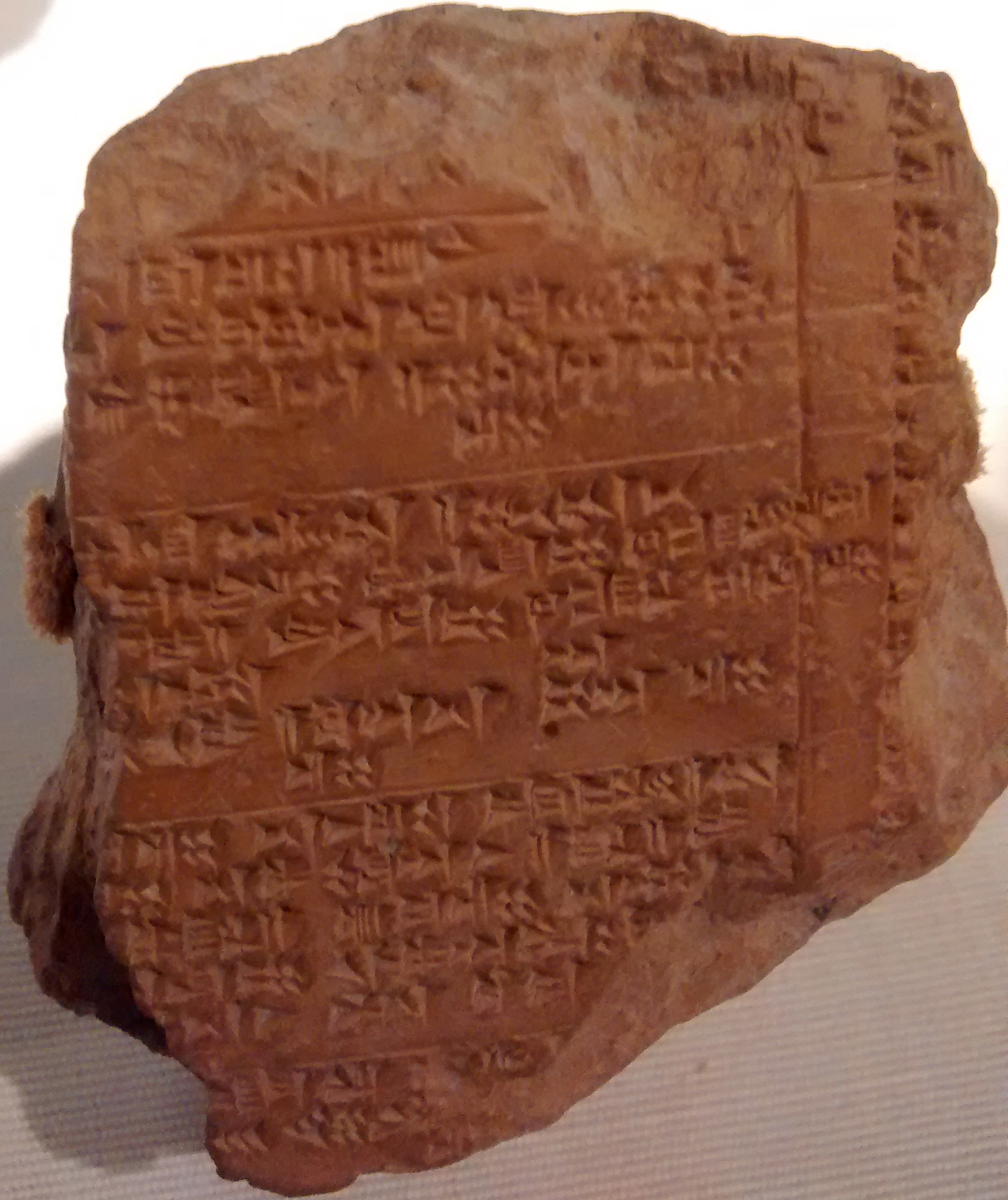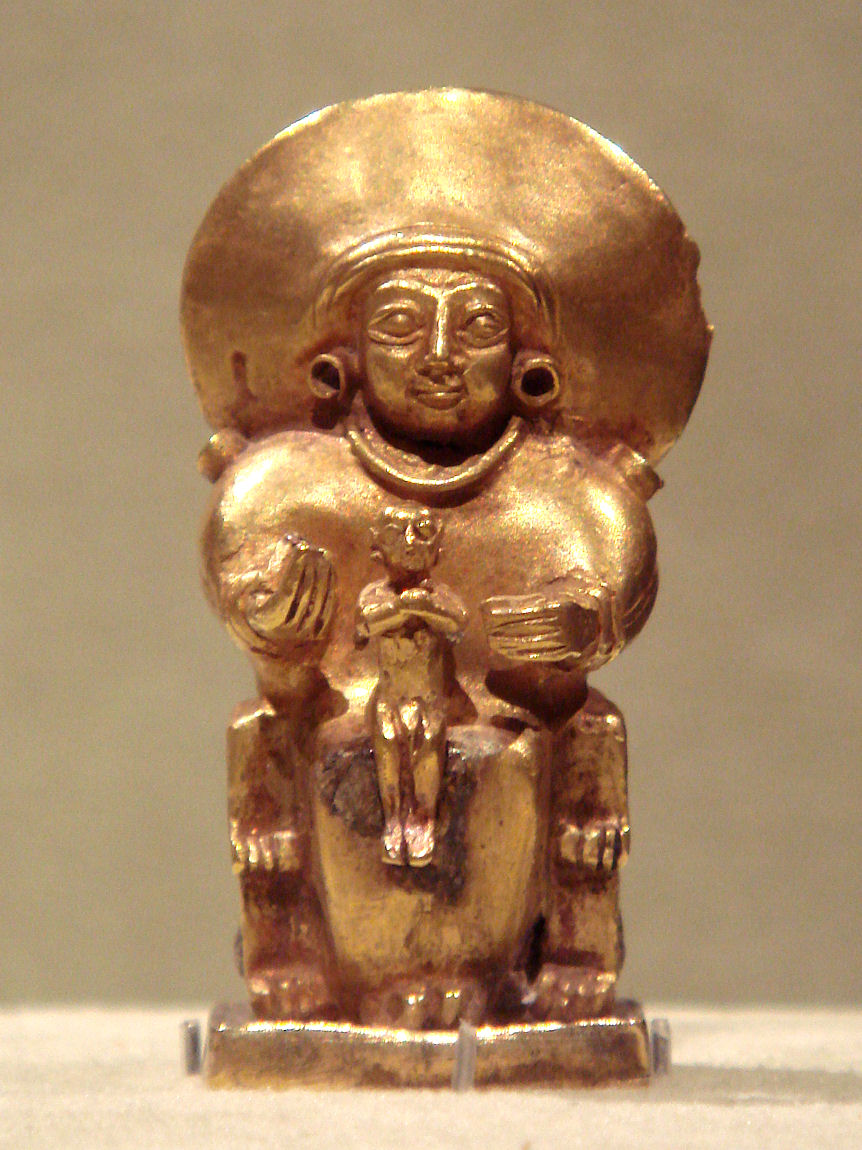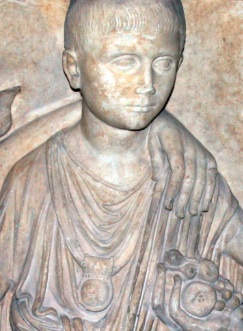|
Nerik
Nerik ( Hittite: ''Nerik(ka)''"Nerik(ka)." ''Reallexikon der Assyriologie.'') was a Bronze Age settlement to the north of the Hittite capitals Hattusa and Sapinuwa, probably in the Pontic region. Since 2005–2009, the site of Nerik has been identified as Oymaağaç Höyük, on the eastern side of the Kızılırmak River, northwest of Vezirköprü. The Hittites held it as sacred to a Storm-god who was the son of Wurušemu, Sun-goddess of Arinna. The weather god is associated or identified with Mount Zaliyanu near Nerik, responsible for bestowing rain on the city. Nerik was founded by Hattic language speakers as Narak; in the Hattusa archive, tablet CTH 737 records a Hattic incantation for a festival there. Under Hattusili I, the Nesite-speaking Hittites took over Nerik. They maintained a spring festival called "Puruli" in honor of the Storm-god of Nerik. In it, the celebrants recited the myth of the slaying of Illuyanka. Under Hantili, Nerik was ruined and the Hittites h ... [...More Info...] [...Related Items...] OR: [Wikipedia] [Google] [Baidu] |
Mursili III
Mursili III, also known as Urhi-Teshub, was a king of the Hittites who assumed the throne of the Hittite empire (New Kingdom) at Tarhuntassa upon his father's death. He was a cousin of Tudhaliya IV and Queen Maathorneferure. He ruled ca. 1282–1275 BC (middle chronology) or 1272–1265 BC (short chronology). Biography He was the eldest surviving son of Muwatalli II. He was a grandson of Mursili II. During his reign, Mursili III reverted the capital from Tarhuntassa (as it had been under Muwatalli) back to Hattusa (KBo 21.15 i 11-12). However, the Assyrians captured Hanigalbat, which severely weakened his legitimacy to rule over the Hittite Empire. In his seventh year, Mursili III attacked and seized control of his uncle Hattusili's regional strongholds of Hakpissa and Nerik within the Hittite Empire in order to remove Hattusili as a threat to the throne. Hakpissa served as the centre of Hattusili's power while Nerik was under Hattusilis's sway from the latter's position as hi ... [...More Info...] [...Related Items...] OR: [Wikipedia] [Google] [Baidu] |
Kaskians
The Kaska (also Kaška, later Tabalian Kasku and Gasga,) were a loosely affiliated Bronze Age non-Indo-European tribal people, who spoke the unclassified Kaskian language and lived in mountainous East Pontic Anatolia, known from Hittite sources. They lived in the mountainous region between the core Hittite region in eastern Anatolia and the Black Sea, and are cited as the reason that the later Hittite Empire never extended northward to that area. They are sometimes identified with the Caucones known from Greek records. Early history The Kaska, probably originating from the eastern shore of the Propontis,Toumanoff, Cyril (1967). ''Studies in Christian Caucasian History'', pp. 55–56. Georgetown University Press. may have displaced the speakers of the Palaic language from their home in Pala. The Kaska first appear in the Hittite prayer inscriptions that date from the reign of Hantili II, c. 1450 BC, and make references to their movement into the ruins of the holy city of Neri ... [...More Info...] [...Related Items...] OR: [Wikipedia] [Google] [Baidu] |
Sapinuwa
Sapinuwa (sometimes Shapinuwa; Hittite: ''Šapinuwa'') was a Bronze Age Hittite city at the location of modern Ortaköy in the province Çorum in Turkey. It was one of the major Hittite religious and administrative centres, a military base and an occasional residence of several Hittite kings. The palace at Sapinuwa is discussed in several texts from Hattusa. Digs Ortaköy was identified as the site of ancient Sapinuwa after a local farmer contacted Çorum Museum; he found two clay cuneiform tablets in his field. This led to a survey conducted in 1989, and more discoveries. Ankara University quickly obtained permission from the Ministry of Culture to begin excavation. This commenced in the following year, in 1990, under the leadership of Aygül and Mustafa Süel, and have continued since. Building A was excavated first, and then Building B in 1995. The building with the Yazılıkaya-style orthostate and 14th century BC charcoal was excavated after 2000. Aygül Süel has been ... [...More Info...] [...Related Items...] OR: [Wikipedia] [Google] [Baidu] |
Hattic Language
Hattic, or Hattian, was a non-Indo-European agglutinative language spoken by the Hattians in Asia Minor in the 2nd millennium BC. Scholars call the language "Hattic" to distinguish it from Hittite, the Indo-European language of the Hittite Empire. The Hittites referred to the language as ''"hattili"'' (there are no attestations of the name of the language in Hattic itself). The name is doubtlessly related to the Assyrian and Egyptian designation of an area west of the Euphrates as "Land of the Hatti" (Khatti). The heartland of the oldest attested language of Anatolia, before the arrival of Hittite-speakers, ranged from Hattusa, then called "Hattus", northward to Nerik. Other cities mentioned in Hattic include Tuhumiyara and Tissaruliya. Hittite-speakers conquered Hattus from Kanesh to its south in the 18th century BC. They eventually absorbed or replaced the Hattic-speakers (Hattians) but retained the name ''Hatti'' for the region. The name of the inhabitants of that area is l ... [...More Info...] [...Related Items...] OR: [Wikipedia] [Google] [Baidu] |
Tarḫunna
Tarḫunna or Tarḫuna/i was the Hittite weather god. He was also referred to as the "Weather god of Heaven" or the "Lord of the Land of Hatti". Name Tarḫunna is a cognate of the Hittite verb ''tarḫu-zi'', "to prevail, conquer, be powerful, be able, defeat"; from the Proto-Anatolian weather god ''*Tṛḫu-ent-,'' "conquering"; ultimately from PIE ''*terh₂-'', "to cross over, pass through, overcome". The same name was used in almost all Anatolian languages: Luwian '' Tarḫunz-''; Carian ''Trquδ-''; Milyan ''Trqqñt-'', and Lycian: ''Trqqas'' (A), ''Trqqiz'' (B). Norbert Oettinger has argued that the functions of the Anatolian weather god ultimately come from the Proto-Indo-European god Perkwunos, but that they did not preserve the old name to coin instead the new epithet ''Tṛḫu-ent-'' ("conquering"), which sounded close to the name of the Hattian Storm-god ''Taru''. Role As weather god, Tarḫunna was responsible for the various manifestations of the wea ... [...More Info...] [...Related Items...] OR: [Wikipedia] [Google] [Baidu] |
Puruli
Puruli () was a Hattian spring festival, held at Nerik, dedicated to the earth goddess Hannahanna, who is married to a new king. The central ritual of the Puruli festival is dedicated to the destruction of the dragon Illuyanka by the storm god Teshub. The corresponding Assyrian festival is the Akitu of the Enuma Elish. Also compared are the Canaanite ''Poem of Baal'' and Psalms The Book of Psalms ( or ; he, תְּהִלִּים, , lit. "praises"), also known as the Psalms, or the Psalter, is the first book of the ("Writings"), the third section of the Tanakh, and a book of the Old Testament. The title is derived ... 93 and 29. Biblical Hannah has been suggested as a Hebrew version of Hannahanna. Literature *J. G. Macqueen, ''Hattian Mythology and Hittite Monarchy'', Anatolian Studies (1959). * Theodor H. Gaster, ''Psalm 29'', The Jewish Quarterly Review, University of Pennsylvania (1946) Spring festivals Hattian mythology {{MEast-myth-stub ... [...More Info...] [...Related Items...] OR: [Wikipedia] [Google] [Baidu] |
Sun Goddess Of Arinna
The Sun goddess of Arinna, also sometimes identified as Arinniti or as Wuru(n)šemu, is the chief goddess and companion of the weather god Tarḫunna in Hittite mythology. She protected the Hittite kingdom and was called the "Queen of all lands." Her cult centre was the sacred city of Arinna. In addition to the Sun goddess of Arinna, the Hittites also worshipped the Sun goddess of the Earth and the Sun god of Heaven, while the Luwians originally worshipped the old Proto-Indo-European Sun god Tiwaz. It appears that in the northern cultural sphere of the early Hittites, there was no male solar deity. Distinguishing the various solar deities in the texts is difficult since most are simply written with the Sumerogram dUTU (Solar deity). As a result, the interpretation of the solar deities remains a subject of debate. Family and myths The Sun goddess of Arinna and the weather god Tarḫunna formed a pair and together they occupied the highest position in the Hittite state's pant ... [...More Info...] [...Related Items...] OR: [Wikipedia] [Google] [Baidu] |
Oymaağaç, Vezirköprü
Oymaağaç is a village in the Vezirköprü, Samsun Province, Turkey Turkey ( tr, Türkiye ), officially the Republic of Türkiye ( tr, Türkiye Cumhuriyeti, links=no ), is a list of transcontinental countries, transcontinental country located mainly on the Anatolia, Anatolian Peninsula in Western Asia, with .... References External linksHomepage of the Oymaağaç-Nerik archaeological project (in German) Villages in Vezirköprü District {{Samsun-geo-stub ... [...More Info...] [...Related Items...] OR: [Wikipedia] [Google] [Baidu] |
Pontus (region)
Pontus or Pontos (; el, Πόντος, translit=Póntos, "Sea") is a region on the southern coast of the Black Sea, located in the modern-day eastern Black Sea Region of Turkey. The name was applied to the coastal region and its mountainous hinterland (rising to the Pontic Alps in the east) by the Greeks who colonized the area in the Archaic period and derived from the Greek name of the Black Sea: ''(')'', "Hospitable Sea", or simply ''Pontos'' () as early as the Aeschylean ''Persians'' (472 BC) and Herodotus' ''Histories'' (circa 440 BC). Having originally no specific name, the region east of the river Halys was spoken of as the country ''()'', lit. "on the uxinosPontos", and hence it acquired the name of Pontus, which is first found in Xenophon's ''Anabasis (Xenophon), Anabasis'' (). The extent of the region varied through the ages but generally extended from the borders of Colchis (modern western Georgia (country), Georgia) until well into Paphlagonia in the west, with ... [...More Info...] [...Related Items...] OR: [Wikipedia] [Google] [Baidu] |
Hantili
Hantili I was a king of the Hittites during the Hittite Old Kingdom. His reign lasted for 30 years, from c. 1590 to c. 1560 BC (middle chronology). Biography Rise to power According to the Telepinu Proclamation, Hantili was the royal cup-bearer to Mursili I, king of the Hittites. Hantili was married to Ḫarapšili, Mursili's sister. Around the year 1590 B.C., Hantili, with the help of Zidanta, his son-in-law, assassinated Mursili. Afterwards, Hantili succeeded him as king of the Hittites. Reign There are only a few scattered sources left that describe the reign of Hantili. During his reign, he continued the militaristic traditions of the kings before him. One of Hantili's main concerns was maintaining Hittite control in Syria. He journeyed to the city of Carchemish to conduct a military campaign, most likely against the Hurrians, longtime enemies of the Hittites. The success of this campaign is unknown. After the conclusion of this campaign, he made his return journey to Hat ... [...More Info...] [...Related Items...] OR: [Wikipedia] [Google] [Baidu] |
Uşak University
Uşak University is a university located in Uşak, Turkey. It was established in 2006. Affiliations The university is a member of the Psephosauriscus Caucasus University Association Caucasus University Association is an association of universities founded in 2009. The members are in Azerbaijan, Georgia, Iran, Kazakhstan, Moldova, Northern Cyprus, Russia, Turkey, Ukraine and the United States. List of members *Ağrı İbrahi ....Tüm Uyeler kunib.com References university-directory.eu External links Website {{DEFAULTSORT:Usak University [...More Info...] [...Related Items...] OR: [Wikipedia] [Google] [Baidu] |
Bulla (amulet)
A ''bulla'', an amulet worn like a locket, was given to male children in Ancient Rome nine days after birth. Rather similar objects are rare finds from Late Bronze Age Ireland. Roman bullae Roman ''bullae'' were enigmatic objects of lead, sometimes covered in gold foil, if the family could afford it. A ''bulla'' was worn around the neck as a locket to protect against evil spirits and forces. ''Bullae'' were made of differing substances depending upon the wealth of the family. Roman boys Before the age of manhood, Roman boys wore a ''bulla'', a neckchain and round pouch containing protective amulets (usually phallic symbols), and the ''bulla'' of an upper-class boy would be made of gold. Other materials included leather and cloth. A freeborn Roman boy wore a ''bulla'' until he came of age as a Roman citizen. Before he put on his ''toga virilis'' ("toga of manhood") he placed his boyhood ''bulla'' in the care of his parental household deities (Lares). Some modern sources inte ... [...More Info...] [...Related Items...] OR: [Wikipedia] [Google] [Baidu] |




